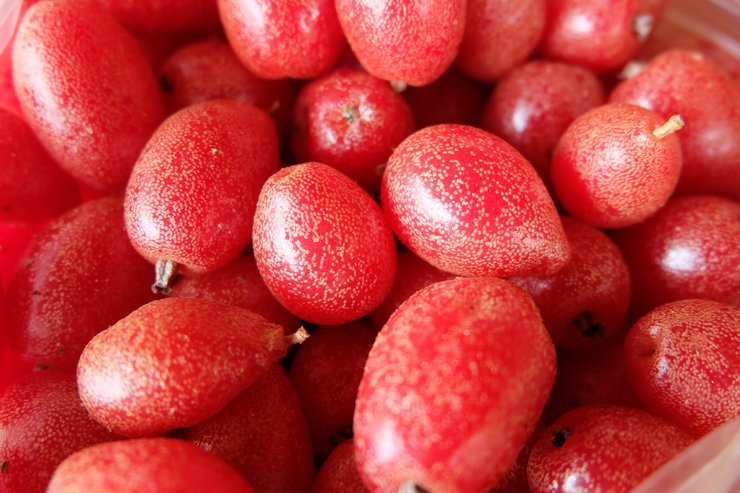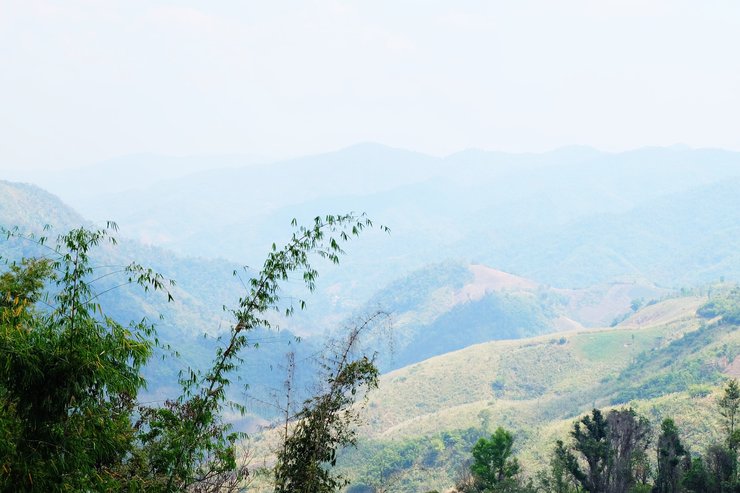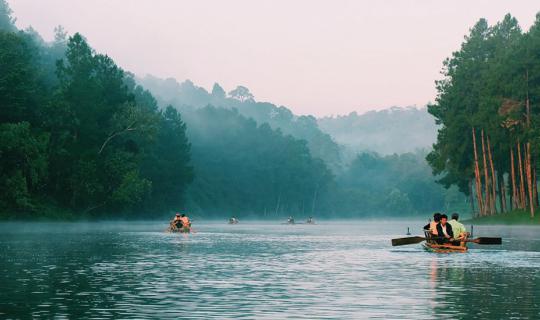Chapter 1: Learning with the Akha People
Where is Lo Yo Village? What is interesting here?" This was the question we asked ourselves before embarking on our journey to this village. On March 13, 2017, we traveled to Lo Yo Village with Local Alike.
Local Alike: Bridging Tourism and Community Development
Local Alike is a unique tourism initiative that prioritizes the connection between tourists and local communities. This approach aims to foster sustainable development by empowering communities, protecting the environment, and preserving cultural heritage. Through immersive experiences, tourists gain valuable insights into the local way of life, while communities benefit from increased economic opportunities and cultural exchange.
We traveled from Don Mueang Airport to Mae Fah Luang Airport in Chiang Rai Province in the morning. Mr. Johan, the owner of the homestay, picked us up at the airport. On the way, we talked about Chiang Rai Province. When we arrived at the village entrance, Mr. Johan stopped to buy some "maklod" fruit, which the villagers were selling, for us to try.

The taste of the marian plum is sweet and astringent.
The journey from the airport to the accommodation takes approximately 1 hour and 30 minutes. Upon arrival, the accommodation offers stunning views of the surrounding mountains.


Accommodation area



We then sat in a circle, sipping tea, talking and listening to Brother Johan tell stories about the history of the village.

Where is Lo Yo Village located?
**The village of Lo Yo is located in Pa Tueng Subdistrict, Mae Chan District, Chiang Rai Province. The villagers are Akha people who have their own language.

Why is the village called "Lo Yo"? According to elder Johan, in the past, the government had not yet surveyed the village. Therefore, the village was named after the leader at that time for ease of reference.


Why choose a mud house homestay? Because Mr. Johan wanted to do something new and blend in with the nature and houses in the village. When he first started building, the villagers, including his parents, didn't understand what he was doing. Mr. Johan started building the mud house in 2007. It took a lot of time, effort, and heart to build it. Now, Mr. Johan's homestay has a total of 8 rooms, 4 with private bathrooms and 4 with shared bathrooms.
After some time talking, it was time for lunch.

Upon arrival, the food was presented in a visually appealing manner. The serving dishes and utensils, crafted from natural materials, exhibited a unique aesthetic.

Today's menu features healthy dishes with an emphasis on vegetables and chili paste. The menu includes: herbal minced pork with boiled spinach, herbal omelet, stir-fried bitter melon shoots, fresh vegetables, and the essential Akha chili paste. Akha chili paste is a staple in every meal.

After finishing their meal, they took their luggage to their room.

The room we stayed in was basic, with no television or refrigerator. However, this was not a problem for us. The room had a private bathroom and a hot water heater.


Gather your belongings and prepare for the afternoon activities.
The afternoon activity will be to get acquainted with the Akha people's toys. The first thing that Brother Johan introduced to us was the "Mai Kong Kang" game, which is a toy that Brother Johan has played since he was a child.

Top-spinning game

The last toy we liked the most is called a tricycle. However, this tricycle must be played with caution, as it can be more dangerous than other toys.


After the ice-breaking activity, we will embark on a journey to explore the village. Led by Johan and the children, we will embark on a walking tour around the village.


The villagers live a peaceful life, mostly engaged in gardening, growing vegetables, and raising animals for self-sufficiency.







Villagers still use firewood for cooking, as evidenced by the presence of firewood in almost every household.


Along the way, we will encounter mulberry trees, and we can taste the fruits all along the way.


After walking around the village, our next activity will be playing in the water with the children.


This stream is fed by the Chan River. Most of the children who come to play in the water live in this area.
A nearby strawberry garden by the stream.


After returning from the stream, it was time for dinner. We helped Fang and her mother cook. The menu was the same as the lunch menu: Akha chili paste. The ingredients included: shallots, grilled chilies, grilled tomatoes, and salt. To make it, add salt, followed by finely chopped shallots, chilies, and pound until smooth. Finally, add the grilled tomatoes.




Dinner is ready. Let's enjoy our meal under the moonlight. The atmosphere is wonderful. After dinner, we will go our separate ways to rest. Good night for today.
Chapter 2: Learning with the Forest
The rooster's crow wakes us up in the morning. We wake up to do our chores and watch the sunrise.


Relaxation corner


And greet the talking myna bird that Brother Johan brought to raise. When all the members arrived, the morning activity was a hike around the village of Lo Yo.

Before embarking on our trek, Johan led us to a museum showcasing the lifestyle of the Akha people in this community. While still under construction, the museum aims to depict the traditional way of life of the Akha people.


Ghost Gate

Inside the museum


It's time to go hiking! This forest is where the villagers go about their daily lives, such as gathering firewood, hunting animals, and finding vegetables and herbs.

Views along the way





After a long hike, we were famished and ready for breakfast. Hiking is typically an evening activity, but due to a change in plans, we had to hike in the morning. For breakfast, we enjoyed a simple meal of rice porridge and omelets.

Afterward, everyone went about their own business, packing their bags to continue their journey. Before bidding farewell to the village of Luoyo, we had one final activity: stringing beads from Job's tears.



Our work, including the bracelet that Johan's mother tied for him,
We must bid farewell to this peaceful village, close to nature. Although our visit was brief, we were impressed. Brother Johan was friendly, and the villagers and children welcomed us warmly. Here, there are smiles, happiness, and a simple life. The food is delicious, and we feel like we are staying with friends. We were able to participate in activities and learn about the Akha people.
Chapter 3: A Refreshing Stop at Doi Mae Salong Tea Plantation
After lunch, we continued our journey to the 101 Tea Plantation, located in Mae Salong Nok Subdistrict, Mae Fah Luang District, Chiang Rai Province. This plantation is a popular tourist destination, offering stunning views, tea tasting, and souvenir shopping.


Enjoy the view, sip some tea, and head to Doi Din Daeng next.
The Earthenware Studio and Factory of Doi Din Daeng
Nestled in the heart of Chiang Rai, Thailand, lies the Doi Din Daeng Earthenware Studio and Factory. This haven of artistic creation is the brainchild of renowned artist, Ajarn Somlak Kanthibun. The studio's hallmark lies in its dedication to handcrafted earthenware, eschewing the use of machinery in favor of the time-honored tradition of hand-molding clay.



The atmosphere is lush and verdant, with trees abound throughout the area.

The building is divided into several sections: a production area, an exhibition hall, a product salesroom, a product storage room, and a coffee shop.


Production area




Exhibition Hall


The pottery produced includes cups, plates, bowls, vases, flower pots, and architectural decorations.


Crafted from clay, these ceramic works embody the artist's emotions and imagination, resulting in a unique and distinctive style. Primarily intended for international markets, many of these pieces are one-of-a-kind creations.

The colors and textures of the pottery are derived from natural materials, such as leaves and bamboo ash.

Doi Din Daeng is an ideal destination for relaxation and learning about earthenware pottery. Visitors can also purchase unique souvenirs.



Those interested in pottery can visit Doi Din Daeng Pottery, located at 49 Moo 6, Soi Ban Pa Ao, Phahonyothin Road, Nang Lae Subdistrict, Mueang District, Chiang Rai Province. The opening hours are from 8:30 AM to 4:00 PM, and it is open every day from Monday to Saturday.
And finally, for today, there is a place called "Heaven on Earth." Just hearing the name, you can feel that there must be something special here. As soon as you arrive, you will be greeted by the scent and atmosphere of tranquility. You will see a garden of butterfly pea flowers, lemongrass, and roselle in front of the house.



The home decor is stylish.


The origin of Heaven on Earth began when To's father fell ill and returned to his hometown for treatment. To, born in Chiang Rai, had been living in Bangkok as a photographer. Upon his father's illness, he returned to care for him and started producing and selling tea. They started small, just enough to get by.

Nestled within the premises is a quaint little coffee shop. Its unpretentious style features a hut with tables. While the establishment may lack air conditioning or trendy photogenic corners found in other cafes, it exudes a charm of its own. The owner's friendly demeanor adds to the inviting atmosphere.

The coffee shop offers a variety of complimentary teas, including chrysanthemum tea and butterfly pea tea.


The displayed ceramic vessels are the work of Mr. To. This location also offers ceramic-making workshops.

Pottery angle

The cafe's signature drink is butterfly pea latte with honey. They also offer a variety of teas, including butterfly pea, roselle, chrysanthemum, bael fruit, and lemongrass. The owner personally prepares all the tea and coffee.


Recommended menu: Butterfly Pea Latte


Those seeking a simple life, relaxation, and an opportunity to learn pottery can find a welcoming homestay here.
The highlight of this trip was visiting a community-based tourist attraction. I learned about the community and experienced a life free from the hustle and bustle of the city. They live a simple life and find happiness in it. This trip took place in Chiang Rai province, and it was my first time visiting this province. If you're interested in learning about communities, you can follow me on this journey. Thank you for reading, and have a wonderful trip! ^_^
การเดินทางของ Simmiee
Friday, October 4, 2024 3:23 PM












